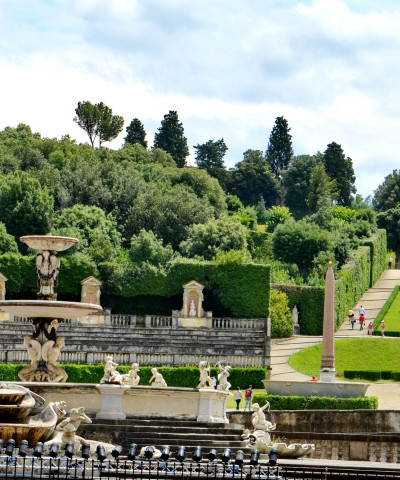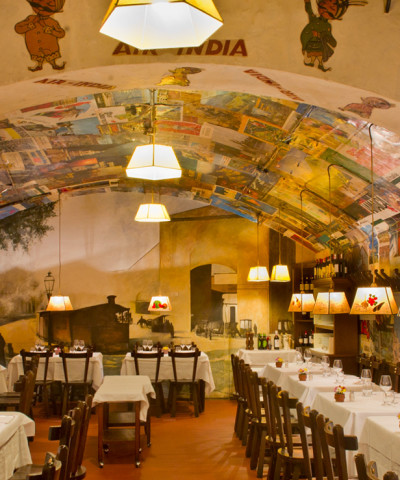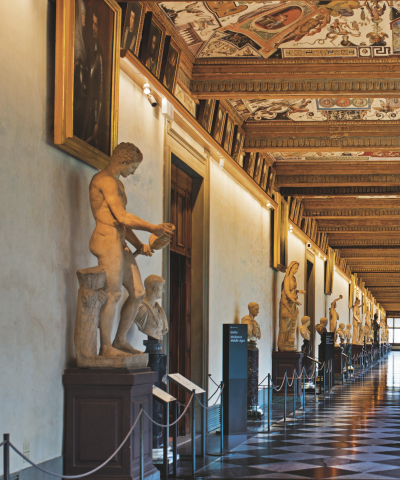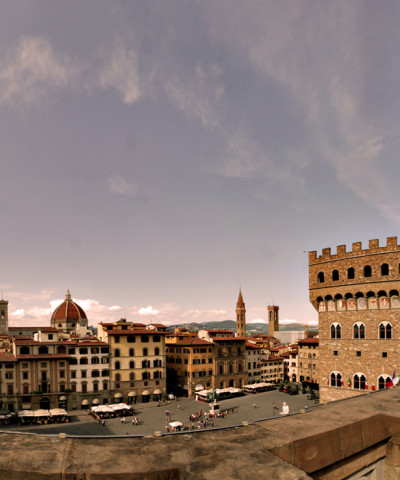The secret room of Michelangelo
Can also be visited from 1 August onwards: bookings open from Tuesday 2 July
It was November 1975, almost 50 years ago, when Paolo Dal Poggetto, then director of the Museo delle Cappelle Medicee - one of the most important museums in Florence - commissioned restorer Sabino Giovannoni to carry out some cleaning tests in a narrow corridor below the apse of the New Sacristy, on the occasion of the construction of a new museum exit.
The small room, 10 metres long by 3 metres wide, 2.50 metres high at the apex of the vault, had been used as a charcoal deposit until 1955 and then left unused, closed and forgotten for decades, under a trapdoor completely covered by furniture. Removed for the work two layers of plaster, the exceptional discovery: a series of wall drawings of figures, traced with charred wood sticks and sanguine, of various sizes, in many cases overlapping, which dal Poggetto attributed for the most part to Michelangelo.
The then director hypothesised that the artist had taken refuge in the small room in 1530, when the Prior of San Lorenzo, Giovan Battista Figiovanni, hid him from the vengeance of Pope Clement VII, who was furious because the artist - during the period when the Medici were driven out of the city - had served as supervisor of the fortifications for the brief period of Republican rule (1527-1530).
Having obtained the family's pardon, after about two months - which, according to reconstruction, should be between the end of June and the end of October 1530 - Michelangelo finally returned free and resumed his Florentine assignments again, until he finally left the city for Rome in 1534.
The drawings, which are still being studied by critics, according to Dal Poggetto's thesis were made during the period when the artist was being persecuted. Michelangelo is said to have used the walls of the small room to sketch out some of his projects including works for the New Sacristy, on which he had been working since 1523, such as the legs of Giuliano de' Medici Duke of Nemours, quotations from antiquity, such as the head of the Laocoon, and projects referring to other sculptures and paintings.
After an experimental opening of three months and environmental monitoring that gave positive feedback, the Director General of Museums Massimo Osanna, who has taken over as interim director of the Bargello Museums, has decided to extend the opening for another three months - from the beginning of April to the end of June 2024 - confirming the same modalities.
Following the great success and the recorded sell-outs, the public opening of Michelangelo's Secret Room continues from 1 August onwards.
The Secret Room is accessible by reservation only, to a maximum of four people in groups and accompanied, up to a maximum of 100 people per week. It is open on Mondays (at 15:00, 16:30 and 18:00), Wednesdays (at 9:00, 10:30, 12:00, 13:30, 15:00, 16:30, 18:00), Thursdays (at 9:00, 10:30, 12:00, 13:30, 15:00), Fridays (at 15:00, 16:30 and 18:00) and Saturdays (at 9:00, 10:30, 12:00, 13:30, 15:00, 16:30, 18:00). The maximum stay in the room is 15 minutes, accompanied by the Museum's reception and security staff. As it is necessary to descend a narrow staircase to enter the room, it is not accessible to the disabled or, for safety reasons, to children under the age of 10.
The entrance ticket to the secret room costs €20 per person (€2 for the reduced ones; free for under 18s) to which must be added the cost of the compulsory reservation (€3) and the price of the entrance ticket to the Medici Chapels Museum (€9 full price, €2 reduced). A total of €32 for full tickets and €7 for reduced tickets.
Reservations: operalaboratori.com – 055. 294883













